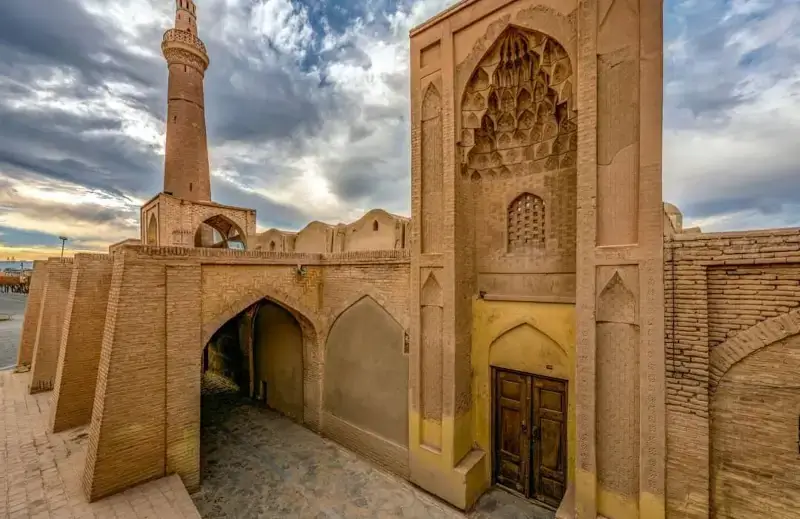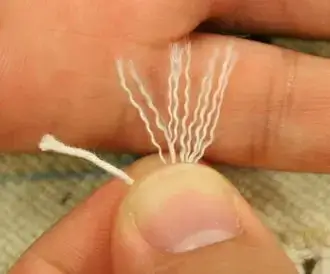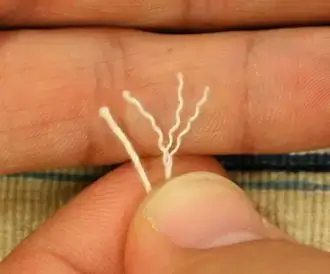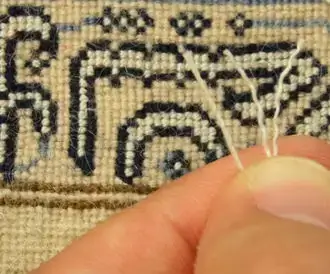Nain (Naein and Naeen) Rugs

Nain lies 170 km north of Yazd and 140 km east of Isfahan with an area of almost
35,000 km2, Nain lies at an altitude of 1545 m above sea level.
Unique to Nain are some of the most outstanding monuments in all of Iran: the Jame
Mosque, one of the first four mosques built in Iran after the Arab invasion; the Pre-
Islamic Narej Fortress; a Pirnia traditional house; the Old Bazaar; Rigareh, a qanat-
based watermill; and a Zurkhaneh (a place for traditional sport).
Besides its magnificent monuments, Nain is also famous for high-quality carpets and
wool textile and homemade pastry.
It has one of the earliest remaining mosques in Iran, and has a Sassanid era fort, now
in ruins, called Narin Ghal’eh.
It extensively uses ab anbars. Nain is most famous in the world for its rugs.

Mosque of Nain: has one of Iran's oldest mosques still standing
Rug Production began here in the 1930’s. Although Nain rugs are not as old as many
of the traditional Persian rugs, they retain their value in terms of construction.
Carpets and Rugs from the city have a high reputation and are very popular. Material
as well as the workmanship is of highest class and the knot density is high; often
more than one million knots per square meter. The material in the more exclusive
carpets consists of wool on a silk warp or silk in the warp as well as in the weft and
pile.
The main characteristics of Nain rugs:
Size: These rugs are often grandiose in scale, many exceeding 25 feet in length.
Warp: mostly cotton, sometimes silk.
Weft: mostly cotton.
Pile: The pile is wool, woven with an asymmetrical (Persian) knot and the pile is
clipped short, sharply defining the design elements. The wool used in Nain rugs,
known as kork wool, is usually finer than the standard Persian wool.
Knot count: Generally between 35 and 75 in 7 cm or more than 800 per square inch.
The standard used to determine the quality of a Nain rug is the measurement of LAA,
the number of threads forming each fringe at the end of the rug. They are exquisitely
woven with the Persian knot, with an average of 300 knots per square inch. The
higher the knots per square inch and the lower the LAA, the higher the quality and
the price of a Nain rug is.
LAA is a Farsi word for layers and refers to the layers or ply of each warp the rug is
woven upon. An easier way to think of this, is LAA is the number of yarn fibers that
make up one fringe (the warps of a rug usually end as the fringe).
To find the LAA, take one strand of fringe and unravel it as follows:
When one stand fringe is unraveled, it is easy to see the number of layer of threads
used. There will be either 2 or 3 threads in that one strand.

An example of 9LAA

3 pair of threads are visible = 6La, 850 000 - 1 000 000 knots per square metre

2 pair of threads are showing = 4La, 1 000 000 - 1 300 000 knots per square metre.
If 3 threads, unravel those 3. If you find 3 additional threads, this would be a 9 LAA
or Nola (nola is the Farsi word for 9) (3×3 = 9). If the 3 threads unravel to only 2
additional threads each, it would be a 6 LAA rug or Shisla (3×2 = 6).
If only 2 threads are in the fringe strand, unravel those 2. You will find they will
unravel into 2 threads each and it will be a 4 LAA rug or Charla (2×2 =4).
Knot: Asymmetric (Persian) Knot.
Design and pattern: Patterns with a medallion in the middle together with
arabesques and floral motifs are common. The similarity to carpets from the nearby
city of Isfahan is remarkable. But they are easily distinguishable by the colors used.
Elegant and understated, the Persian Nain rug is highly desirable and a testament to
the craftsmanship of the area. The curvilinear type of design allows for artistic and
elaborate motifs. There is typically a center medallion on a dark blue or ivory field
elaborately filled with flower motifs such as the Shah Abbas, a series of curvilinear
floral forms, creating a garden-like background. It can be found in an all-over format
or with a centrally located diamond-shaped medallion as well as arabesques and
birds and animals.
Color: Generally bright colors: Cream, Khaki, Beige, white, Green, Yellow, Red.
Nain is one of the few weaving cities which uses white wool as a predominant color.
Nain is known to use fewer amounts of color, rarely more than 8 different colors in
one rug.


